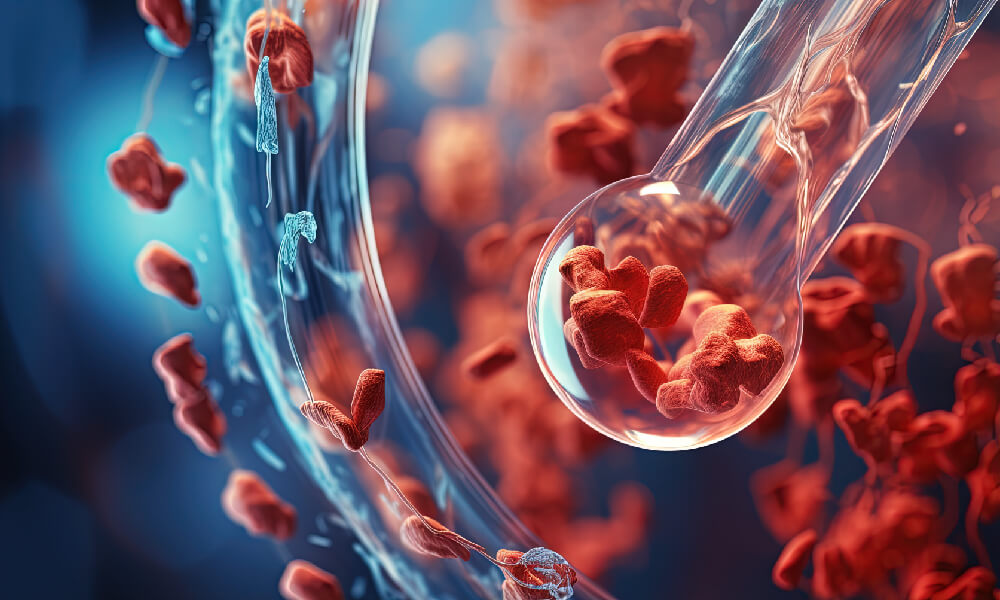<< Back to MOTIFvations Blog Home Page
cfDNA in Urine – New data for DNA Fragmentation Hotspots and Bladder Cancer

April 16, 2025
Table of Contents:
Introduction: Improving Care for Bladder Cancer Patients
The early diagnosis and effective monitoring of bladder cancer can support improved patient outcomes; however, the invasive nature of the required techniques has prompted the search for alternative approaches to patient management. Recently developed non-invasive molecular diagnostics for bladder cancer that evaluate components of liquid biopsies have faced the problems of detecting early-stage disease and dealing with an inherently high level of molecular heterogeneity (Christensen et al. and Dudley et al.). Fragmentomic analysis of the cell-free DNA component of liquid biopsies represents a potential solution due in part to the ability to trace tissue epigenomic profiles (Im et al.); however, while this approach provides robust diagnostic performance and both plasma and urine represent appropriate sample types, reports of the applicability of cell-free DNA fragmentomic analysis to bladder cancer remain few (Zhou et al. and Mouliere et al.). The low abundance of circulating tumor DNA in blood plasma in bladder cancer patients has also raised concerns over the applicability of this liquid biopsy form (Mouliere et al.). Could urine come to the rescue of bladder cancer, the malignancy of the urine-containing organ (Markus et al.)?
A related study described the development of a novel computational approach (Cell fRee dnA fraGmentation or CRAG) to identify highly fragmented cell-free DNA regions called “hotspots” (Zhou et al.). Said regions represent “open” chromatin sites that can identify cancer-related genomic elements; indeed, machine-learning models employing cell-free DNA hotspot data have demonstrated robust performance in multicancer detection (Zhou et al.). Researchers headed by Hong-Yu Zhang, Jian Song, Fu-Bing Wang, and Xing-Huan Wang reported their recent investigations into the diagnostic effectiveness of cell-free DNA fragmentation hotspots in bladder cancer detection and the capacity to explore disease-associated molecular mechanisms. Their new Clinical Chemistry study reports the promising diagnostic performance of urine cell-free DNA fragmentation hotspots for bladder cancer detection (even in early stages) and the discovery of associations between these hotspots and disease-associated molecular features (Meng et al.). Does urine cell-free DNA fragmentation hotspot analysis represent the future of non-invasive bladder cancer management?
Urine Cell-Free DNA Fragmentation Hotspot Analysis Offers Diagnostic and Biological Information
Meng et al. assessed the diagnostic performance of cell-free DNA fragmentation hotspot-driven machine-learning models in urine samples isolated from a cohort comprising 55 bladder cancer patients, 51 benign condition patients, and 11 healthy volunteers and performed functional bioinformatics analysis to support biological understanding and the interpretation of their tool’s diagnostic capabilities. Initial epigenetic landscape-related cell-free DNA fragmentation hotspot analysis revealed enrichment for transcription start sites and CCCTC-binding factor (CTCF)-binding sites (open chromatin regions) but no “closed” chromatin regions (as expected) in plasma and urine samples. Moving forward, the authors discovered that a urine cell-free DNA fragmentation hotspot-based machine-learning model effectively detected bladder cancer, displaying high performance (87% sensitivity at 100% specificity), and outperformed related models that employed alternative cfDNA-derived features. A subsequent stage-stratified analysis provided 71% and 92% sensitivity (at 100% specificity) of the urine cell-free DNA fragmentation hotspot-based machine-learning model for early (low-grade Ta and T1) and advanced (high-grade T1 and muscle-invasive) disease.
Subsequent biological analyses revealed that urine cell-free DNA fragmentation hotspot analysis identified gene regulatory elements correlating with the cell-of-origin for bladder cancer; overall, the authors discovered robust evidence for the urothelium as the cell-of-origin (as expected) while also demonstrating that urine samples detected a higher tumor fraction compared to plasma samples (as expected in this tumor type). Analysis of urine samples for bladder cancer-related molecular features also revealed more robust findings than plasma; the data readily identified associated bladder cancer-related genes/functional ontologies, genomic regions associated with bladder cancer somatic alterations and/or genetic susceptibility, and the bladder cancer transcription factor regulatory landscape.
Urine Cell-Free DNA Fragmentation Hotspot Analysis: The Future of Bladder Cancer Management?
In summary, this study revealed how cell-free DNA fragmentation hotspot analysis in urine samples could represent the future of non-invasive liquid biopsy-based personalized management for bladder cancer patients; furthermore, the authors highlighted how these analyses could provide data that could support the development of personalized treatment approaches that overcome disease heterogeneity. To reach this goal, the authors note the need to overcome certain obstacles, such as the relatively high cost of the assay and the need for both sequencing facilities and a trained clinical bioinformatician; however, they highlight the development of a more targeted analytical approach and an automated computational platform as potential solutions.
For more details on how urine cell-free DNA fragmentation hotspot analysis could represent the future of non-invasive bladder cancer management, see Clinical Chemistry, December 2024.
About the author

Stuart P. Atkinson, Ph.D.
Stuart was born and grew up in the idyllic town of Lanark (Scotland). He later studied biochemistry at the University of Strathclyde in Glasgow (Scotland) before gaining his Ph.D. in medical oncology; his thesis described the epigenetic regulation of the telomerase gene promoters in cancer cells. Following Post-doctoral stays in Newcastle (England) and Valencia (Spain) where his varied research aims included the exploration of epigenetics in embryonic and induced pluripotent stem cells, Stuart moved into project management and scientific writing/editing where his current interests include polymer chemistry, cancer research, regenerative medicine, and epigenetics. While not glued to his laptop, Stuart enjoys exploring the Spanish mountains and coastlines (and everywhere in between) and the food and drink that it provides!
Contact Stuart on X with any questions
Related Articles
Can We Manage Cancer with NEMO Analysis of cfDNA in Liquid Biopsies
February 19, 2025
A team led by Francesca Demichelis and Misha Beltran reports the development of the "NEMO", which assesses DNA methylation at selected regions in cell-free DNA from liquid biopsies to provide a non-invasive means of disease management in aggressive prostate cancer forms. Catch up on this new method!
Read More
How to: Long-read Sequencing of cfDNA from Patient-derived Liquid Biopsies
April 8, 2025
Catch up on a new approach to sequencing of cfDNA from patient biopsies. Researchers at University of Manchester have shown how long-read sequencing of cell-free DNA in liquid biopsies using an Oxford Nanopore Technology platform is a robust alternative to short-read sequencing that may support improved cancer patient management.
Read More
Classified: A Cell-Free DNA Cancer Signature Ensemble Classifier
February 25, 2025
Cell-free DNA analysis supports the development of a cancer signature ensemble classifier for non-invasive cancer detection and enhanced patient management. Access and get up to date on this potential breakthrough in patient management, bench to beside epigenetics!
Read More
Can we detect Parkinson’s Disease....looking at DNA Methylation?
October 28, 2024
The epigenetic analysis of liquid biopsies of Parkinson's disease patients and healthy controls suggests differential DNA methylation patterns as a potential biomarker. In this blog, we continue our series on DNA modifications and DNA damage as key indicators of health and disease.
Read More
<< Back to MOTIFvations Blog Home Page










